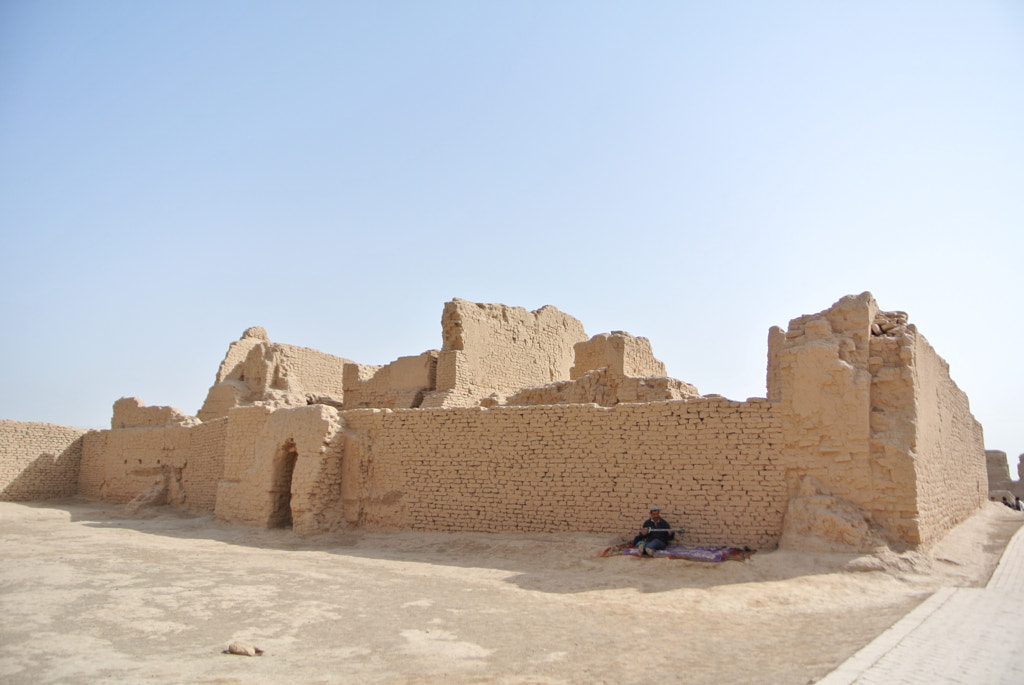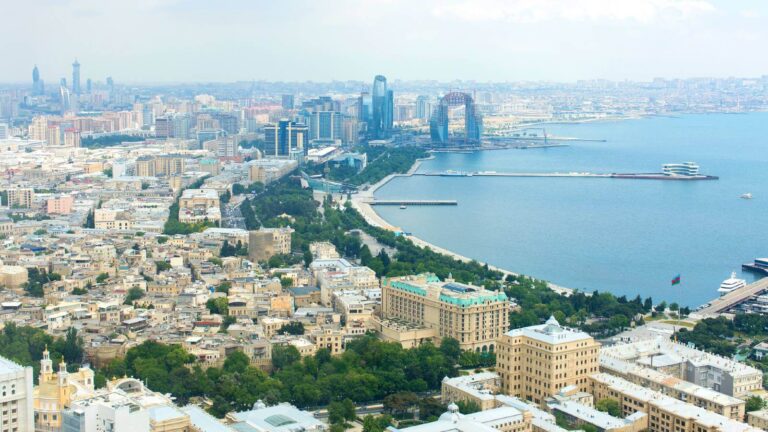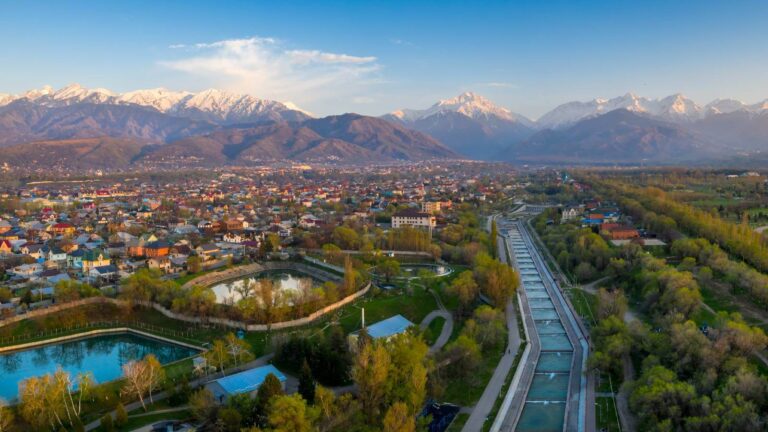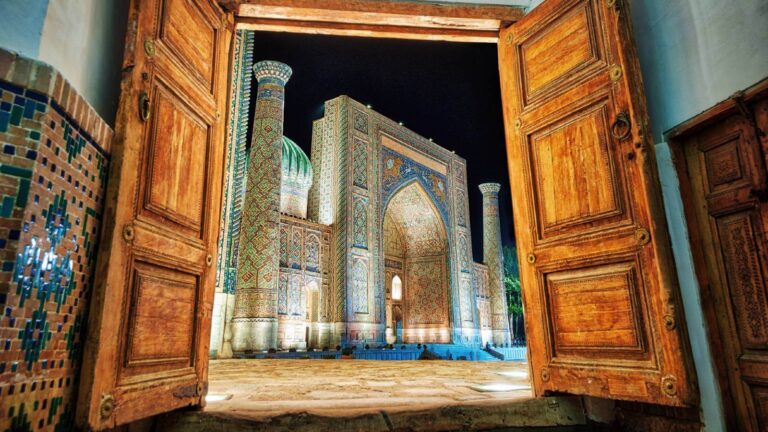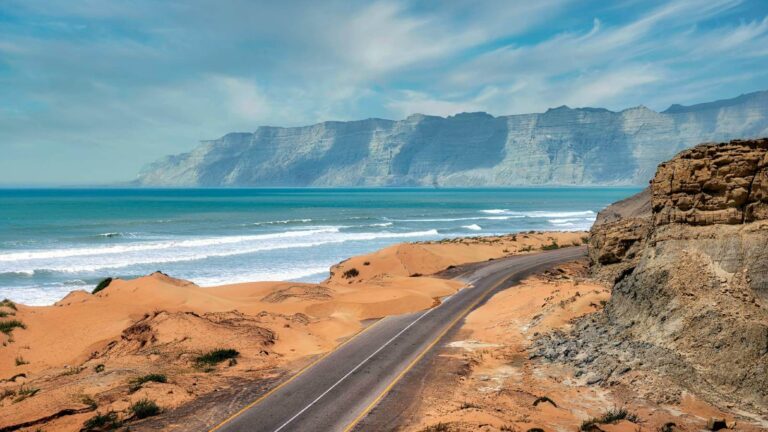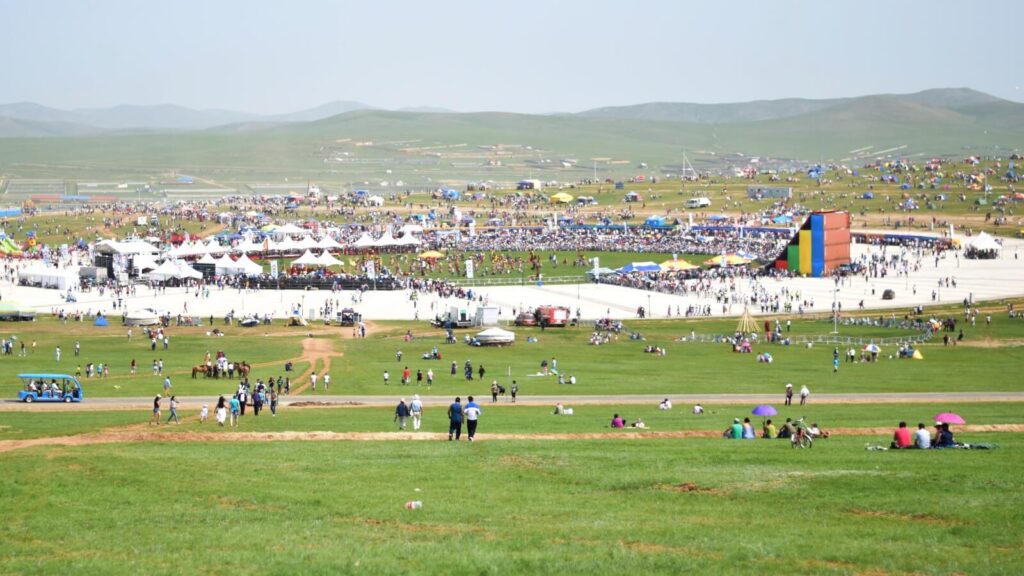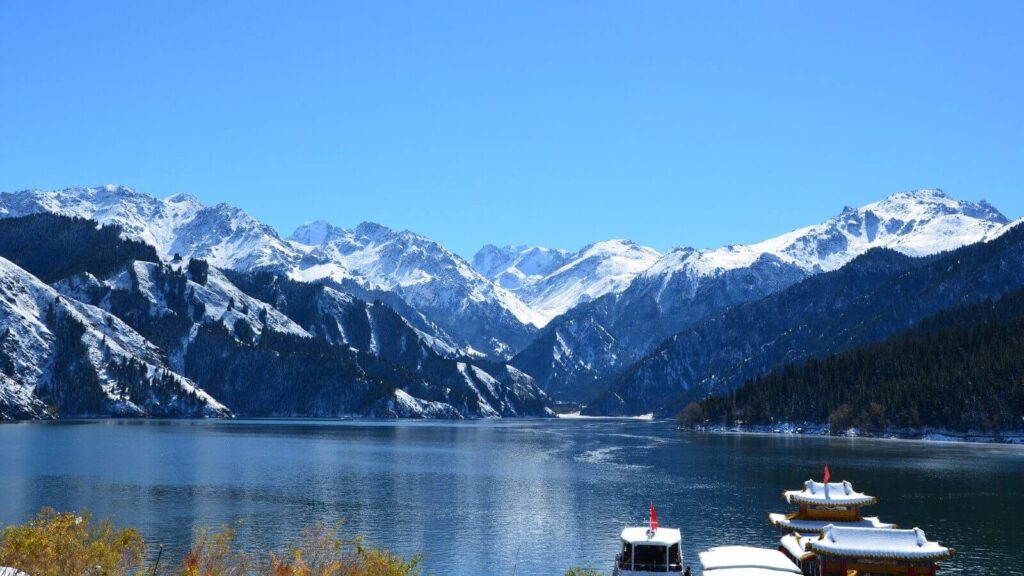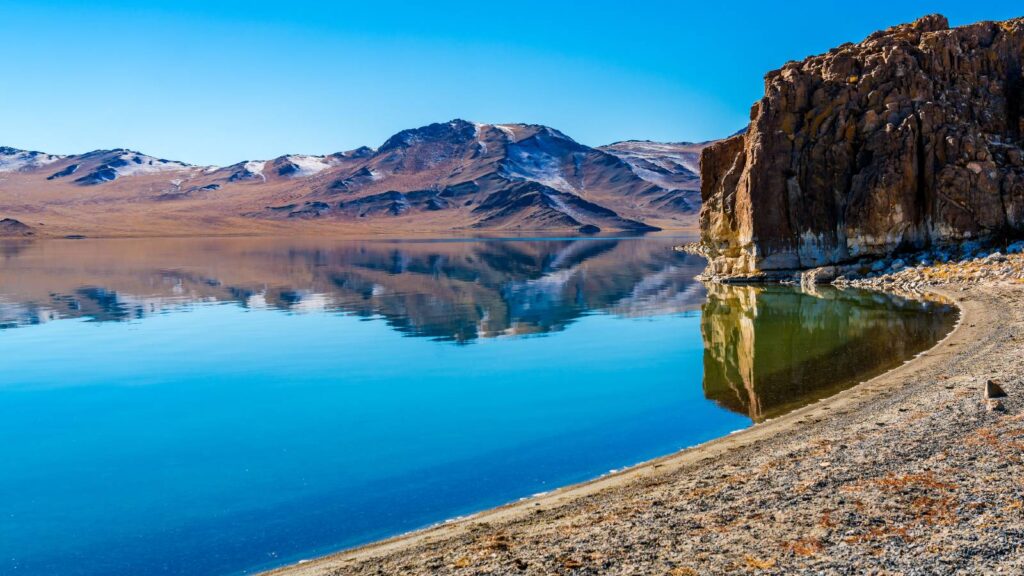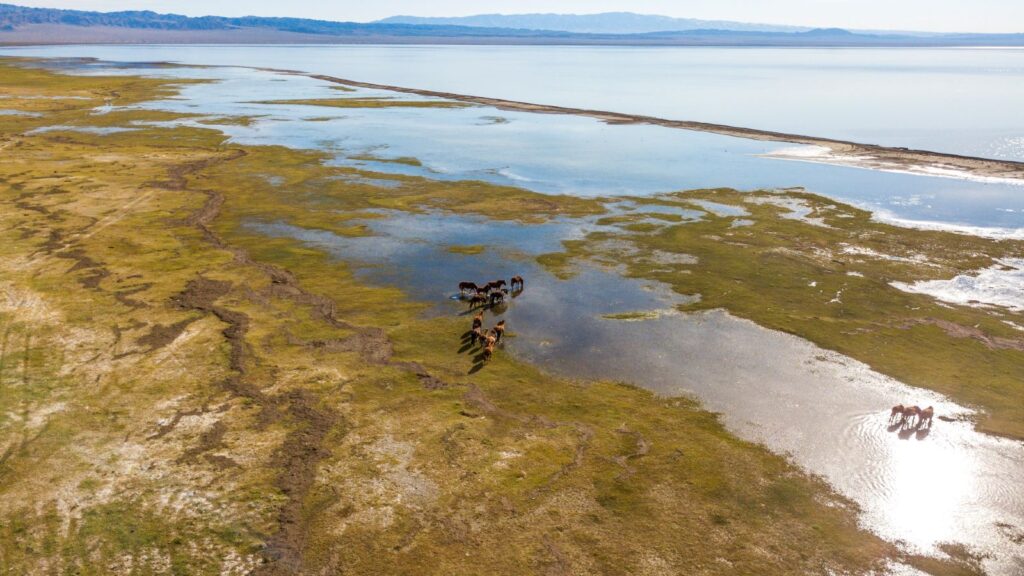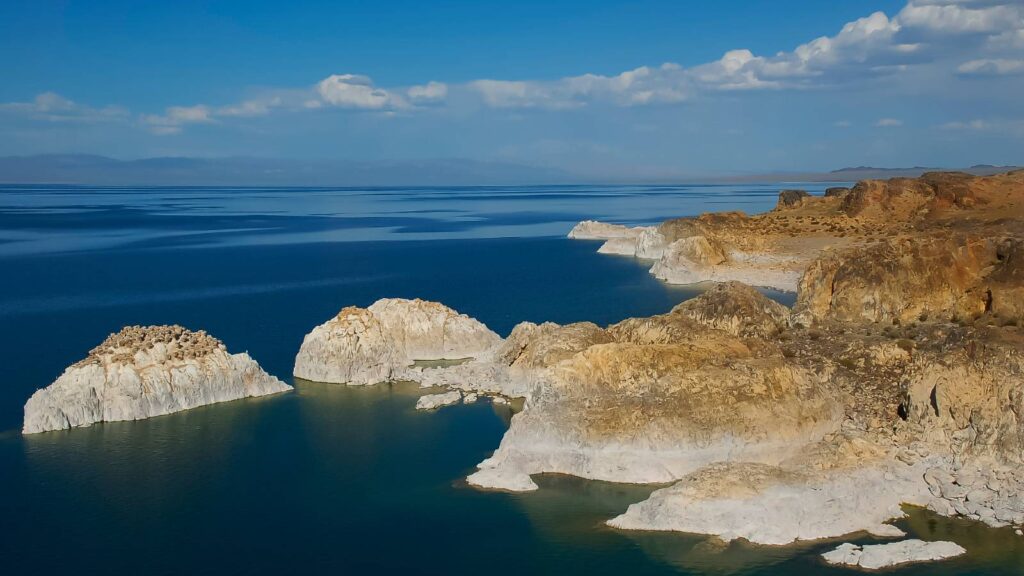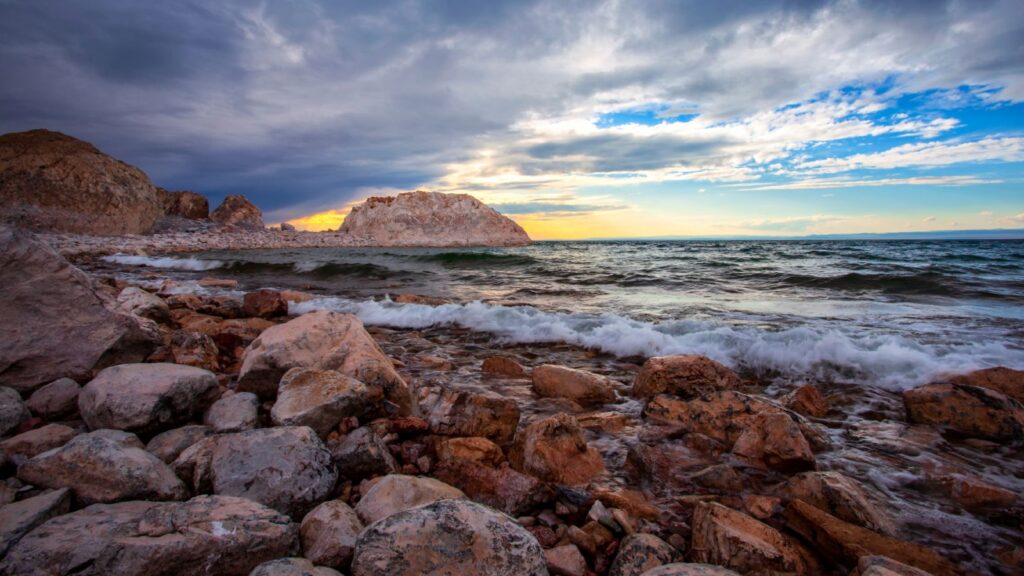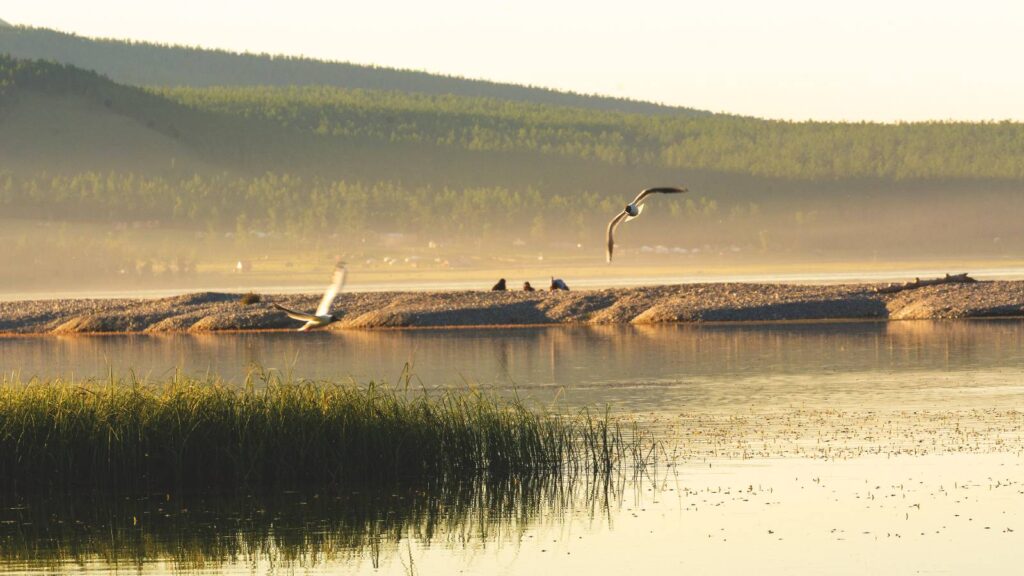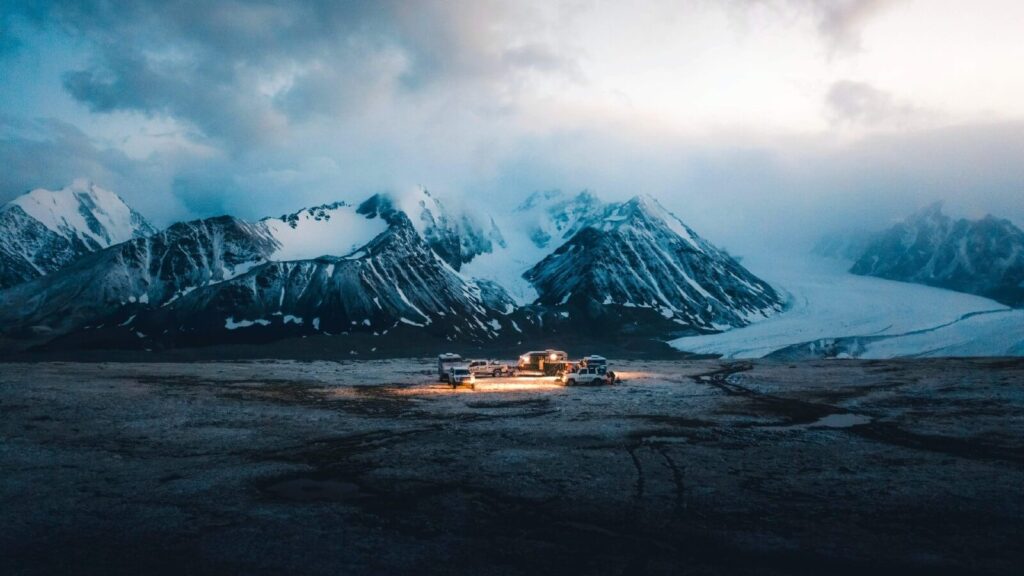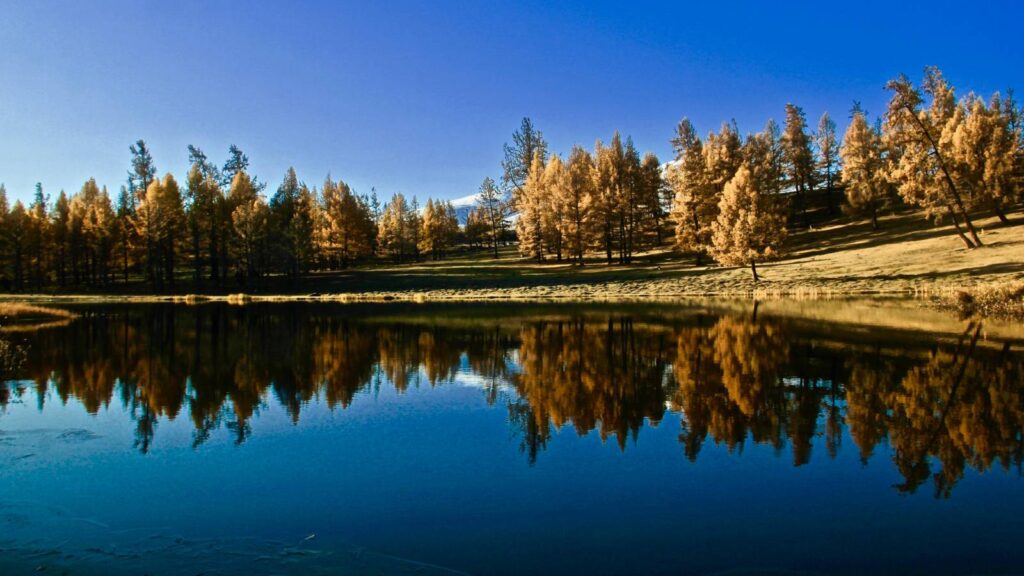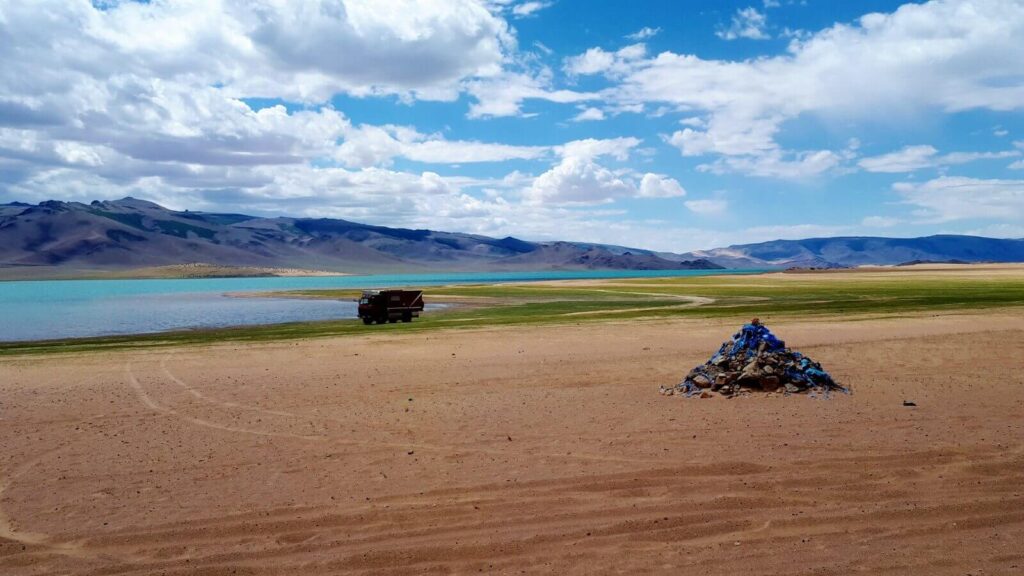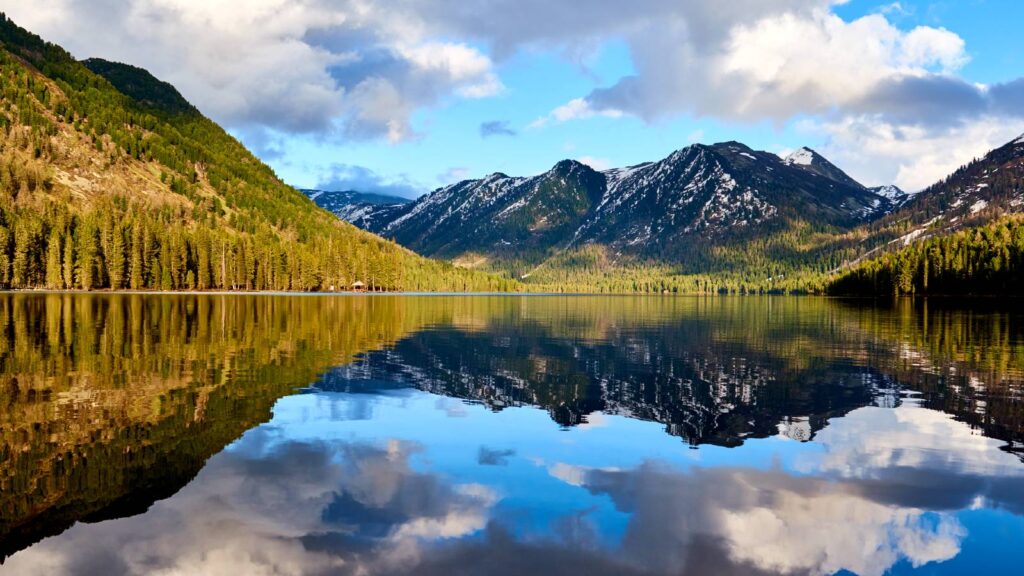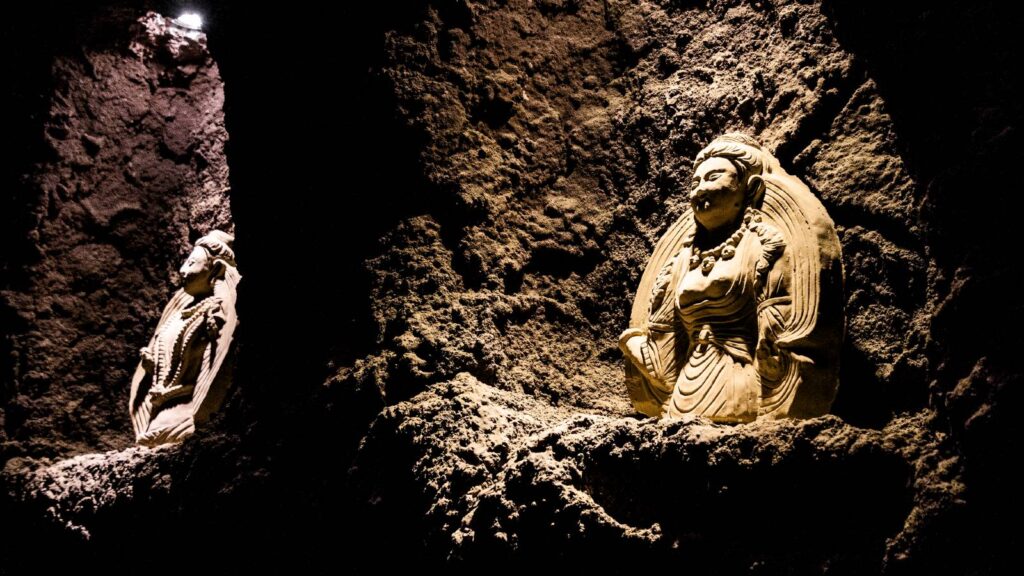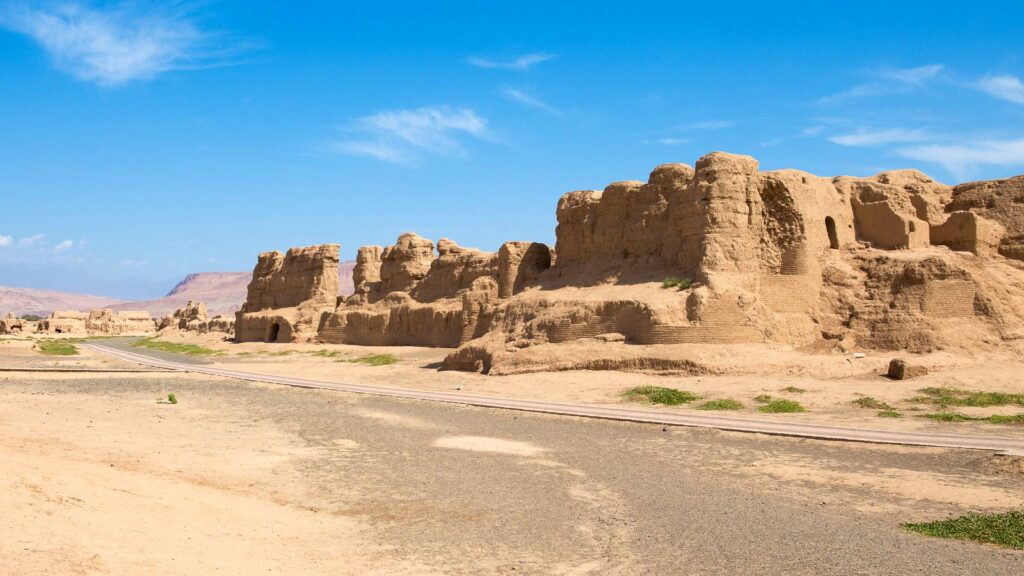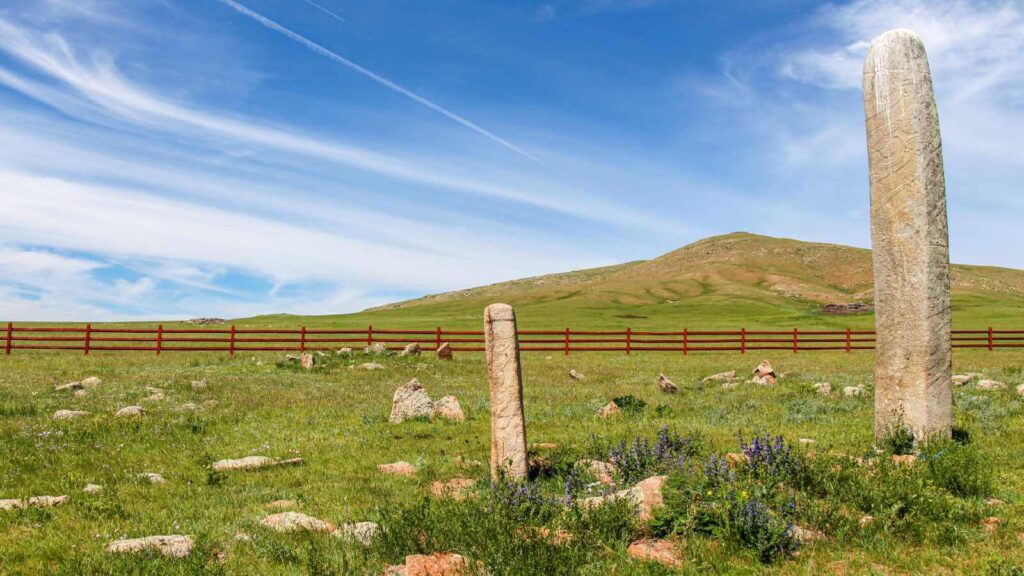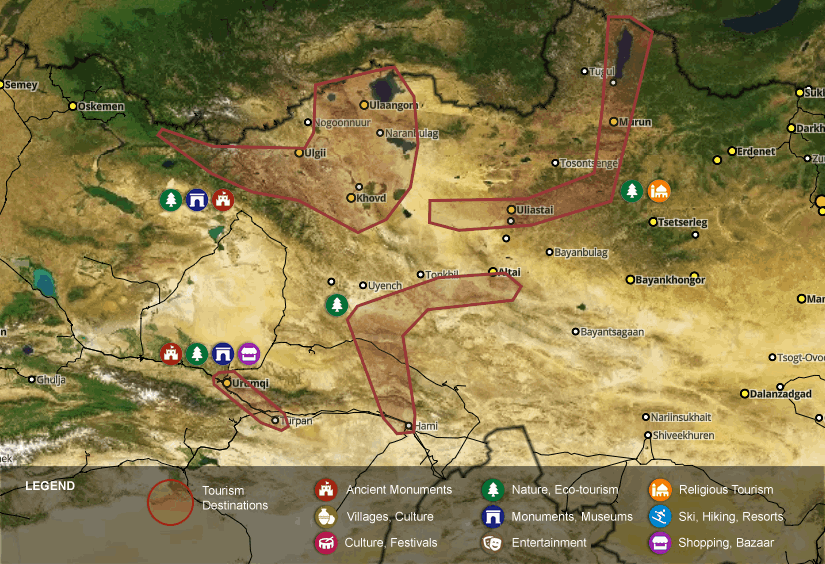
Khövsgöl Nuur to Mongol Els Sands, Mongolia
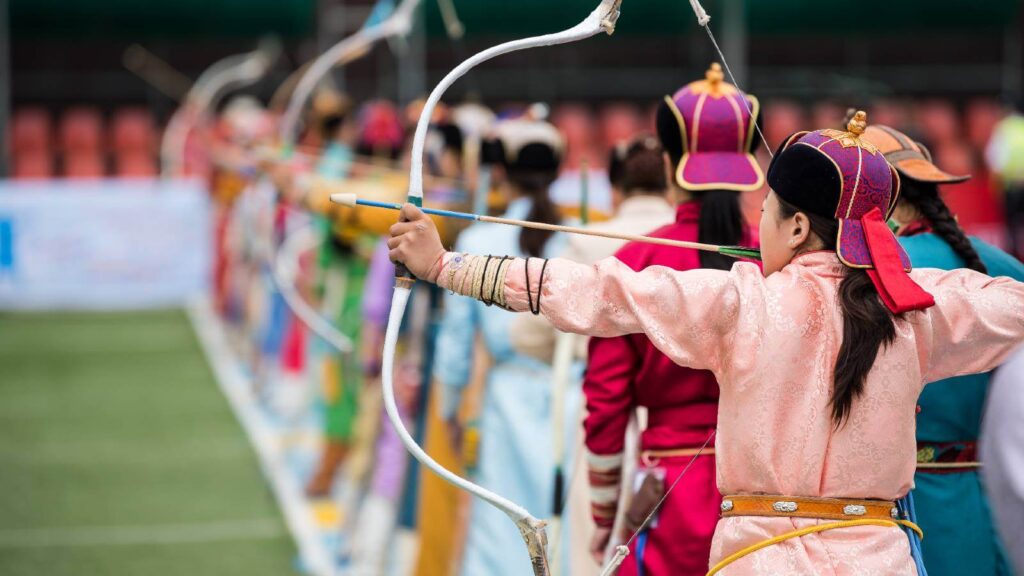
Red Yabar Coloured Cliffs to Hami Prefecture
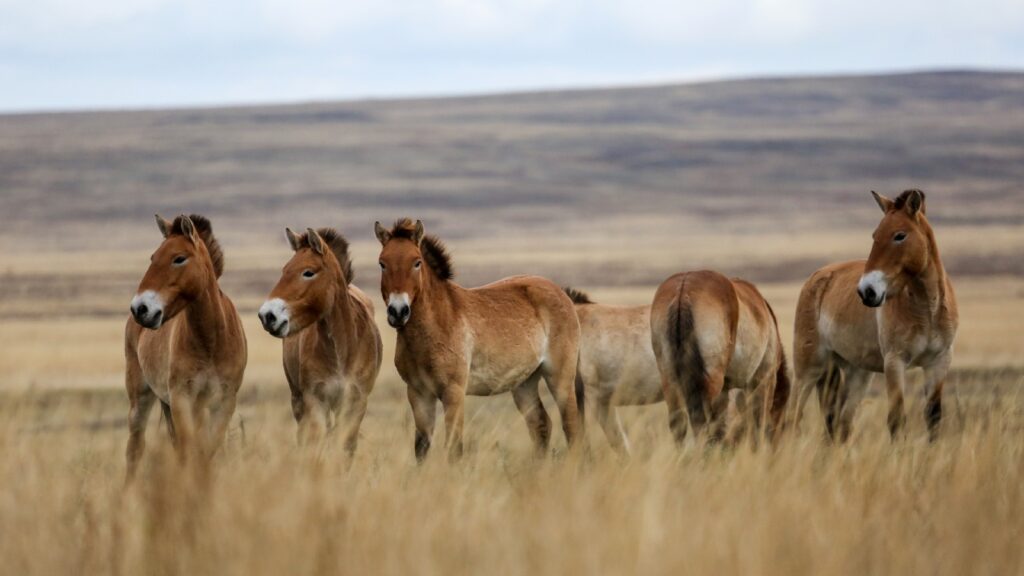
Urumqi, Tourfan Cities and Area, XUAR Region

Western Mongolia, linking with Kazakhstan
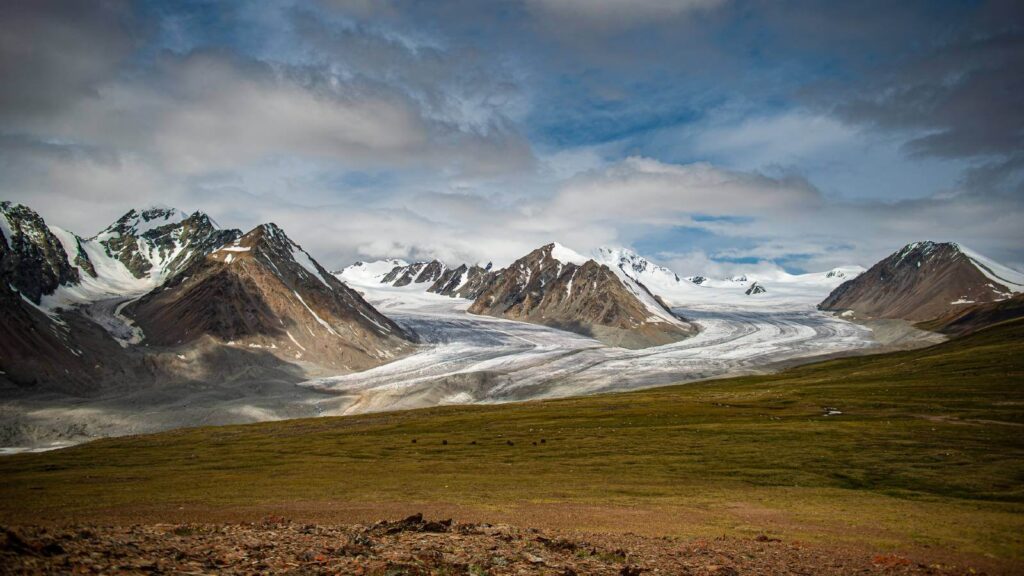
History and Culture
The appearance and the climate of the Altai has changed very little since the last ice age, and mammoths probably survived here later than anywhere else. Denisovan hominids were living in this region 40,000 years ago, and for a brief period they would have co-existed with both Neanderthals and Homo sapiens. More sophisticated societies emerged in the Altai during the Bronze Age, when nomadic warriors and metal workers built a series of burial sites known as the Seima-Turbino phenomenon.
Perhaps the most important Bronze Age monuments, however, are the deer stones, some carved 4,000 years ago, which now have UNESCO World Heritage Site status. The deer stones, like more than 500 stone man monuments, were used to mark sites for burials and ritual sacrifices, giving us some insight into the beliefs of ancient people.
When the Silk Road expanded into the Altai, Buddhism spread here along with trade. Cities such as Gaochang were wealthy, cosmopolitan centres. Jiaohe, capital of the Tokharian Kingdom, had religious complexes with Buddhist temples and stupas, and in the 5th century monks travelling between India and China carved hundreds of sculptures and painted vivid frescoes in a site now known as the Bezeklik Thousand Buddha Caves.
What to See and Do
Uncountable lakes dot the Altai, each more scenic than the last. One, Khuvsgul Nuur, is known as the ‘Blue Pearl of Mongolia’, and it gives its name to the Khuvsgul Nuur National Park. This is a prime location for active tourism: the hiking and horse riding is fantastic, and you can kayak, fish, and camp here, too. Less intrepid visitors can admire the views from a 4×4, or alternative venture out on a daytrip to the more accessible Tian Chi Lake (Heavenly Lake) a three-hour drive from Urumqi.
Compliment your adventure with some cultural experiences, delving into the Altai’s past. At Gaochang Ancient City, the ruins of walls, gates, temples, and homes give a glimpse of what life was like in this Silk Road oasis, and the 70 grottoes which comprise the Bezeklik Thousand Buddha Caves are exquisite. Emin Minaret is one of the tallest minarets in China and a reminder of the Islamic heritage of Xinjiang, an interesting counterpoint to the much earlier religious sites denoted by the deer stones at the Uushigiin Uver Archaeological Site and the Sirgali Stone Man.
To better understand the intangible cultural heritage of the Altai, schedule your visit to coincide with the annual Naadam Festival which takes place every July. Thousands of sportsmen and spectators come from across Mongolia for competitions in archery, wrestling, and horse games. It is a prime opportunity for visitors to try traditional foods, listen to local music, and photograph people in national dress.
